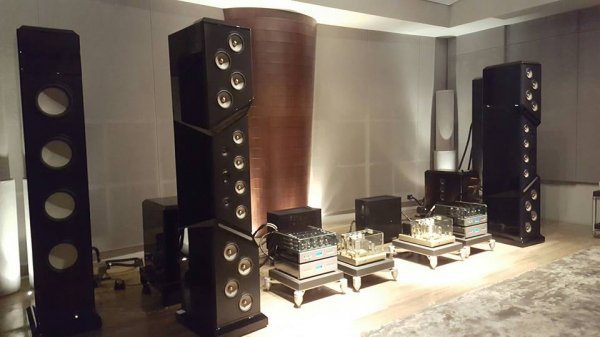Empirical Audio
Industry Expert
I'm really curious where you are getting this from
I don't know what you are basing this information off of but I disagree 100%. When done correctly there is no loss in transparency. During blind testing I got just as many wrong as I did right. I couldn't tell if the control was in or out. And the purpose for the control is not to cure a bad crossover. It is to provide flexibility for placement and listener preference. We don't all like the same thing.
In a passive speaker the crossover itself is the EQ. Where we shape the frequency response of each driver for a flat response, and then combine with the other driver(s) to achieve flat response throughout it's entire response. Our volume control does not effect the linear response of the driver. It is just a volume control. The shape of the drivers response does not change. But since you are adjusting the speakers overall frequency response, technically you could call this tone control.
I understand all of this. I'm a EE with 38 years design experience. I have had my own audio design business for 22 years. I'm not arguing against speaker adjustments. I'm arguing against speaker adjustments using passive devices. I've modded a number of loudspeakers, including rebuilding their crossovers. I found that resistors, capacitors and inductors can all be improved upon and that using good DSP, such as Sonic Studio is even better. These passive devices never behave like their textbook ideals. Capacitors always have inductance and resistance as well as varying dielectric absorption depending on the technology. Resistors always have inductance. Inductors have saturation effects unless they are air-core.
The fact that I was able to improve the sound of these modded loudspeakers so significantly by changing the passive crossover components demonstrates that these passive devices are far from perfect and that ultimately a good DSP software providing files to individual DACs to each driver is optimum.
If you need convincing that passive devices are far from perfect, just replace the series woofer inductor on any of your speakers with a Jensen-capacitors air-core inductor of the same value in 12 gauge, or a series tweeter capacitor with a Duelund. You will be shocked at the level of improvement.
DSP has a long way to go to match up to a well designed speaker in a good room. But that's my opinion. There are a few things DSP doesn't calculate that is used in designing a passive crossover and this is what separates them. Also in a passive crossover the enclosure itself is factored in to all the measurements which are not with DSP. But like I said.....we don't all like the same thing.
I can understand your opinion because 90% of the DSP software currently available is not transparent IME. There are exceptions however, and DSP can do things that no passive design can do, including any type and order of crossover, many with no phase-shift. Anything that can be done with passives can be done with DSP. It can also be tweaked on-the-fly, ultimately doing fine frequency and level tuning for a speaker or even for each individual speaker or driver. Changing a driver mid-stream in a speakers production is no longer an issue. There is no crossover in the speaker to tweak, just new DSP settings for the new driver.
DEQX is a good start, and I've used it at trade shows with multiples of my DAC to do active crossover, but the ultimate goal should be DSP crossover function in the data files, eliminating the passive or external crossover altogether. It's just a matter of time. We have the small cool-running switching amps that can fit inside speakers now. This technology has the potential for lifting the performance of all loudspeakers, particularly less expensive ones.
Steve N.
Empirical Audio







